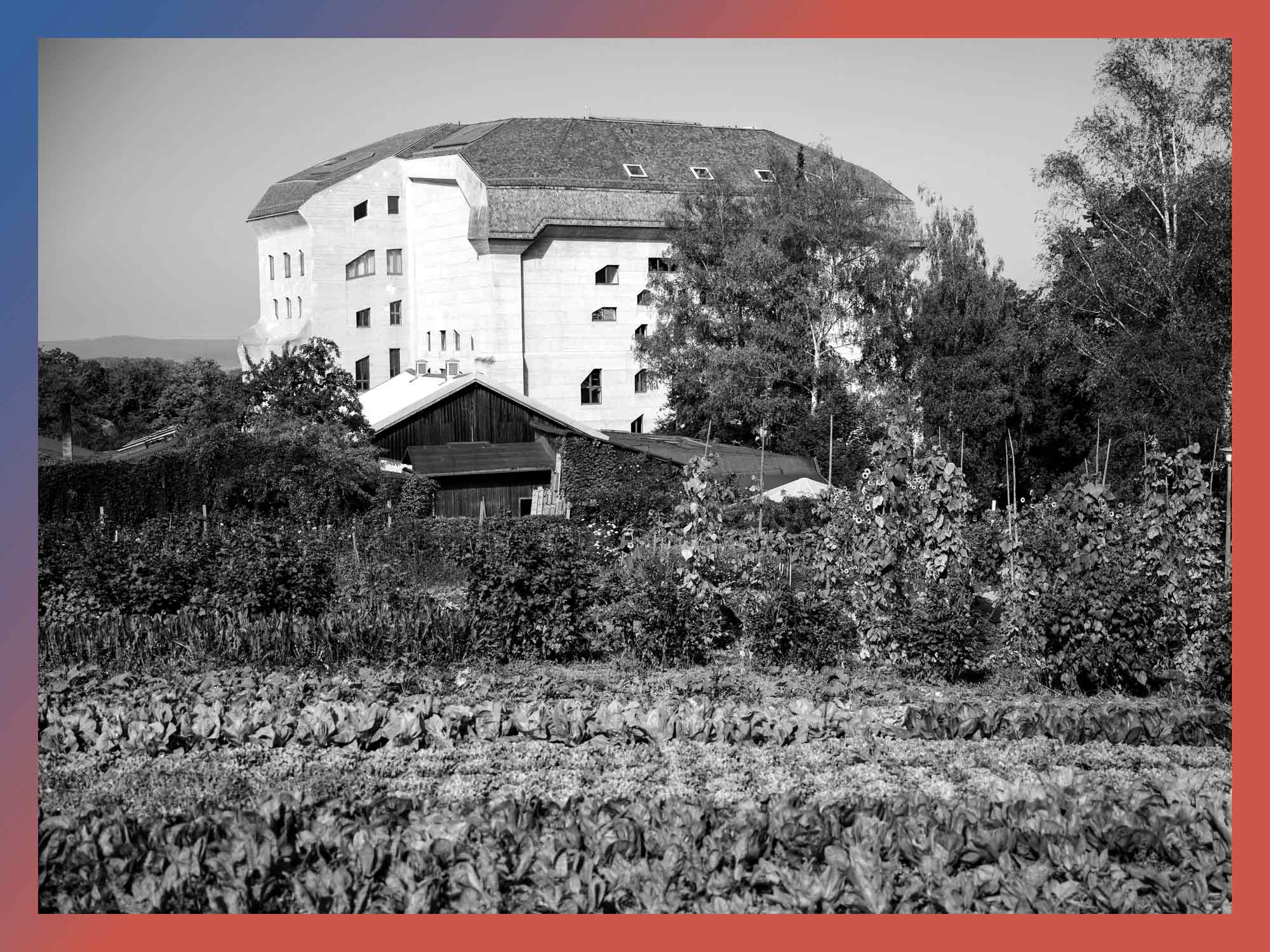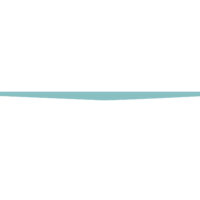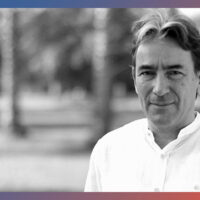What is important when one wants to advocate for the spiritual view—to awaken an understanding or at least a willingness to consider that an immortal kernel resides in every human being, that animals are entitled to dignity, that the deceased count as a part of life? I offer three approaches that answer this question, at least so I believe: we should learn to tell stories, dance, and garden.
These three activities have a mythical ring to them, because they belong to what is most human, because they free the child in us, because—and this is a basic trait of the spiritual, of the anthroposophical—they focus on the positive, the constructive, indeed life itself. “The heart always beats for something,” is how I once put it. My appeal to the Goetheanum World Conference is: let us learn once again to tell stories, dance, and garden with all that is dear to us—so that we may love and thus warm and kindle others.
Telling Stories
The storyteller grasps after the right word in a specific moment because they know the power of newly born language—and the power of the word is decisive. We live in images, and words tumble out of the images in ways that surprise even us. Rüdiger Grimm, who was asked to explain anthroposophical social therapy for an encyclopedia, told me that we should cast anthroposophical concepts in new words every ten years because words age. Joachim Daniel told me, “The words have lost their aura,” describing how anthroposophical terms had lost their power and would only shine again through a new narrative.
It is not the words that paint pictures but the reverse: the words flow from inner perception, from what the soul paints inwardly. I suspect that our skill in deciding between old and new words will grow, and I suspect that the longing for these inner images is currently so fierce due to the flood of images coming at us from small and large screens. At our graduation, the Waldorf teacher Georg Glöckler told us, “A seeker in the spirit is a stammerer with words.” The saying was then emblazoned on the back wall of the auditorium.
We might not debate whether anthroposophy is a science or religion; we could take it as a grand narrative. As Rudolf Steiner explained to Édouard Schuré, this narrative arrived in the bookshops and lecture halls precisely when, with the advent of the twentieth century, the old myths and legends. We no longer had the ears—the hearts—to hear and understand them.
Last year, the Goetheanum communications team met in Basel at the headquarters of Kaffeeemacher:innen (The Coffee Makers). The business is a hit in ecologically produced coffee and broader coffee culture. In hundreds of films on YouTube, they tell stories about coffee—from the organically planted bean in Costa Rica to the properly brewed espresso at home. Benjamin Hohmann, head coffee maker, told us what it takes to be heard: words! Internet search engines track and calculate which words are searched and found online. Bringing language charged with meaning into the digital conversation generates attention—and it can do so for a sustainable cause.
Telling a story also involves putting the “who” up front. “Who is doing something?” is the first question. That is why the passive constructions “it was decided, it was determined” are unsuitable for narrative. Language becomes even weaker when qualifications by auxiliary verbs are added to the passive voice: “Here it can be said” instead of “I say.” Narration needs to be personal and unambiguous; indeed, it is precisely the personal statement that allows for clarity without seeming arrogant. Let us get personal and tell the stories about the spiritual experiences we have had ourselves!
Dancing
Friedrich Nietzsche writes in Thus Spoke Zarathustra (The Grave Song), “Only in dance do I know how to tell the parable of the highest things.” The person who dances has their eye on three things: their surroundings, their partner, and themselves. In my understanding of Nietzsche, this provides the legitimacy to speak of the highest things, and this is especially true in moving time: we are aware of ourselves, keep an eye on our surroundings, and are simultaneously present in the “flow.” We ask, look, and then take the next step.
The beginning of Christian Morgenstern’s poem, “Those who do not know the goal cannot have the path,” is reversed for dancers: “Those who do not know the path will have nothing of the goal.” Wolfgang Schad highlighted in a lecture that Faust was the drama of the nineteenth century, and Wilhelm Meister of the twentieth and twenty-first centuries. Here, it’s no longer the goal that counts but the path—the “how” decides whether we make progress. For perhaps ten years, this is how the stories being told by streaming services worldwide have unfolded. There is no longer a single plot line: in a series, a field of destiny is spread out where it is not the beginning and the end that count but the multi-layered, contradictory now.
Stefan Hasler and Martina Maria Sam asked me to provide a commentary on the zodiac and planets for the volume to be published on Rudolf Steiner’s sound eurythmy course. To this end, I read the notes of the eurythmists instructed by Steiner. It was a thought-provoking experience when I realized the speed—”on the fly”—with which Rudolf Steiner presented his ideas and suggestions. “Do it like this, do it like that …” and on to the next thing. How much of it did he, of necessity, intend to be provisional and temporary and yet was set in stone by those who came after him?
Moreover, while some of Rudolf Steiner’s directions became a guardrail and guiding star, others remained barely considered. Thus, the use of preparations lies at the heart of biodynamics, while the study and breeding of earthworms, flying insects, and birds, as Rudolf Steiner calls for in the seventh lecture of his Agricultural Course, has been, as far as I know, hardly followed up. The loss of seventy percent of biodiversity in the twentieth century lends weight to this indication by Rudolf Steiner. We have to make selections; there is no other way. At the same time, it often remains unclear what sprang from Rudolf Steiner’s mind and what he read and adopted. An example: in faculty meetings of the Section for Mathematics and Astronomy, there was repeated discussion of Rudolf Steiner’s description that comets in their orbits form substance at the front, which dissipates at the back. This sounded interesting, but it contradicted both astronomical observation and unbiased reason. There was something of a subtle put-down in this remark: “How materialistic are you that you don’t want to understand this?” It was only twenty years later that I learned that Rudolf Steiner had taken the idea from Friedrich Hegel.
I suspect that we still underestimate how much—and this is a good thing—he adopted from others in his work. The agricultural ecologist Andrew Lorand estimates that seventy percent of Rudolf Steiner’s Agricultural Course was adopted from other authors. In order not to become a mere imitator, we should learn to dance. Those who dance do not obstinately pursue a goal once it has been set but have everything in view and choose the best, most beautiful, most musical step in the moment. Rudolf Steiner’s references then become less of a law and more of an inspiration. To deal with anthroposophy as a dancer would mean being inspired more by Rudolf Steiner’s way of doing things and less by his research results. Those who dance listen when a new piece of music is played. What does it mean? A dancer’s attitude makes us curious to embrace new spiritual perspectives, even if they do not bear the label “anthroposophy,” like permaculture, non-violent communication, pilgrimage, or yoga.
Gardening
It is always a dialogue when he prepares a new plant bed, Benno Otter, the head gardener at the Goetheanum, explains to me. You plant a shrub here and roses there, and then nature responds as to whether this is in accordance with life. The next year, you make corrections and adjustments. In this way, you are in constant conversation with nature. At the same time, it was your own creative will that counted. When they planted new trees on campus, it was done with a thirty-year perspective, he said. What should the landscape here look like in a generation? This is the span of horticultural activity: you are in daily conversation with your surroundings, and at the same time, you have a view that extends beyond your own life. This is probably how spiritual culture should also be. How could society think about reincarnation in thirty years’ time, and how can we engage in the conversation about it today? These questions, contradictory as they are, should live in the soul and fuel our actions.
Gardening involves removing what proves to be less viable in order to make room for something new. This, too, I believe, is reflected in anthroposophical work. Just as countless references by Rudolf Steiner have proven to be fruitful and forward-looking and have been tested and further developed all over the world, there are not a few references that have proven to be scarcely fruitful or not fruitful at all. As far as I know, this is true of his references to ash pests or to stage plays using basic Greek gestures, and presumably, there is no field of life where such fruitless references do not weigh on the mind because one thinks: What am I doing wrong?
What would happen if we were to move away with greater courage from such references, which after a hundred years have proven to be ineffective? It would liberate us for fruitful paths, lift many a burden from our souls, and give us credibility with those who think differently because we don’t give the last word to Steiner’s reference, but to life. Let us learn to tell stories, dance, and garden!
Translation Christian von Arnim














Dear Wolfgang Held, Thank you very much for sharing your lapidaric insights. Your writing could lead to a handbook, ”How to Live a Grand Life”, with examples and colorful illustrations from people practicing the three virtuous approaches as individuals, as co-workers and as teachers.
In the 1970’s, when I worked at Esalen Institute in Big Sur, the motto of the place was ”Living, loving, learning, teaching.” The thinking, at that time under the guidance of Michael Murphy and Dick Price, was, approximately, do the best you can for yourself, but in the end, try to convey what you know to others in search of growth.
In a handbook on the three approaches, less pretentious than a book as such, it could be suggested that it is possible to make narrating, dancing and gardening into research that can be shared with collegues, peers and students, through methods such as logbooking, documenting, sharing notes and reflections with like-minded practitioners, and, perhaps, making the results known to a larger public.
From the point of view of an 80 year old of limited experience, the tragedy of Anthroposophy in our time is that from day one its practitioners should have been making notes, sketches, diagrams and other recordings of their daily experiences/experiments. This seemed to work, this didn’t appear to lead anywhere; what went on in my classroom resembled/differred from what went on elsewhere; the patients followed up or the patients didn’t follow up; i.e. observations in real-life work with the suggestions offerred in Rudolf Steiner’s grand narrative.
Beginning with narrating, dancing and gardening, a body of irrefutable research could be built up. It needs to be built up if we are to be believable, if our work with Anthroposophy is to bear fruit. Practical experience, when documented and shared with respect for its significance, is research. And handbooks tell ”How to ….”
Yours truly, Eleanor Hill Edwards